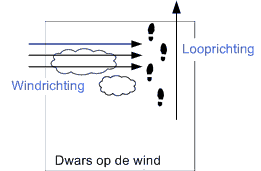Ammonia (NH3) is used in cooling systems of, for instance, large auctions and ice rinks and at distribution companies in the food industry. These companies are shown on the risk map. Ammonia is not the same as the cleaning agent of the same name, this is water in which ammonia has been dissolved.
What is the risk?
Ammonia is a colourless toxic gas with a pronounced stinging odour. It is very irritating to the eyes, skin and mucous membranes. If a high concentration is breathed in for a long period, permanent damage to the lungs may occur or even death.
A risk arises if a cooling system has a leak and a toxic ammonia cloud escapes. The weather has a great deal of influence on the development of that cloud. Ammonia dissolves in water, so that when it rains, the ammonia disappears into the soil. If the wind is strong, the gas is blown away quicker.
What can you do yourself?
In the case of an accident involving ammonia, you are usually safer inside than outside. If there is a risk to the surroundings, the siren will sound.
- If you are near to the accident: do not go to the accident location;
- go and shelter immediately in a house or other building;
- ensure that children and people who need help to flee are sheltered as soon as possible;
- follow the instructions of the emergency services (police or fire brigade); they will warn you using sirens, sound trucks, SMS alerts or the disaster broadcasting station;
- close windows and doors and place damp cloths in front of the chinks;
- close or shut down all ventilation channels: exhaust hoods, wall and toilet grilles, ventilation duct and the mechanical ventilation system (or switch to the lowest position);
- go to a room in the middle of the house/building where it is difficult for the gas to penetrate. If you are nevertheless troubled by the gas, turn on the shower and stand under it.
If you cannot go inside:
- quickly leave the place where you can smell the ammonia;
- ensure that children and people who need help to flee are helped to leave as soon as possible;
- walk (or drive) at right angles to the wind (see the following drawing) and hold a damp cloth in front of your nose and mouth for protection.

Discover the risks in your area
What safety measures are there?
The government imposes safety requirements on cooling systems, including issuing permits. The companies involved are responsible for safety on site.
Companies with a very large cooling system must have their own emergency plan. This plan contains instructions about how to act if there is an accident involving ammonia. There are various prescribed safety features for cooling systems that use ammonia.
The province or the municipality issues the permits and checks whether the companies comply with the requirements imposed. The emergency services (fire brigade, ambulance, police) hold regular practice drills for dealing with an accident involving ammonia.
More information: www.denkvooruit.nl
